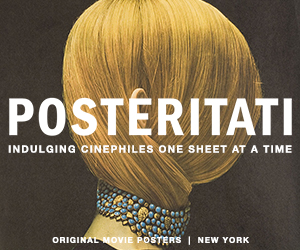I counted at least five different movies in 28 Years Later, director Danny Boyle and screenwriter Alex Garland’s return to the zombie series they started with 28 Days Later back in 2002. Thankfully, each is brazenly, bizarrely, grotesquely compelling in its own way. It’s as if Boyle and Garland had nearly 28 years of their own to generate ideas, then ended up smooshing them all into a single film. (Never mind that two more installments are also in the works.)
As in 28 Days Later and 2007’s 28 Weeks Later (a stellar installment directed by Juan Carlos Fresnadillo), the first “movie” we get in Years is a terrifying, standalone opening sequence. We’re dropped into a living room packed with kids, eyes glued to a television screen but ears clearly tracking the horrible screams that can be heard through the door. If you already thought Teletubbies was unnerving, wait until you see how Boyle and editor Jon Harris incorporate the children’s show here.
Through the multiple movies that follow, there is one consistent element to 28 Years Later: the jarring aesthetics. Boyle and Harris employ frenetic editing throughout—jump cuts and insert shots frequently assault the screen—while cinematographer Anthony Dod Mantle, returning from 28 Days Later, has upped the digital ante even further by shooting with adapted iPhones this time around. It’s not cutting-edge, but that’s the point, as the jittery, imperfect imagery evokes the available technology of the recent past. (Writing about the digital cinematography of 28 Days Later in 2002, I suggested that “it’s as if the movie were made with the only functioning equipment left in London.”)
After that opening sequence, we get Movie #2, which takes place on an island off the coast of a quarantined United Kingdom—28 years after the events of the first film. Trapped by international patrols enforcing the quarantine by sea, but protected from the chaos of the UK mainland by a watery channel, the islanders have established a quasi-religious community organized around a militant expression of survival. This involves indoctrinating the children in violent traditions, such as crossing over to the mainland to hunt a grotesque variant of the “infected”—bulbous humanoids who wallow across the ground and eat worms. (They recall something from the Garland-directed, body-horror experiment, Men.)
This section introduces Jamie (Aaron Taylor-Johson), who brings his 12-year-old son Spike (Alfie Williams) on his first hunting trip for worm-eaters—a tense section that is intercut with archival military footage and archery clips from Laurence Olivier’s Henry V. Add a screeching voiceover recording of Rudyard Kipling’s “The Boots,” a poem about the drudgery of soldiering, and you have a provocative examination of the personal and moral costs of feeling “safe.”
This notion is pretty much dropped, however, as 28 Years Later moves on to follow other narrative threads. I’ll only hint at what they involve: Spike’s mysteriously ailing mother (Jodie Comer); the appearance of an infected “alpha;” Ralph Fiennes as a former doctor who has established a vast crematorium on the mainland. (The production design for the ossuary he has built is the movie’s most arresting image.) There is a tantalizing notion at the heart of each of these mini-movies, but unfortunately they hang on the film independently of each other—something like mismatched ornaments on a Christmas tree, rather than a connected string of lights.
This quirk has bedeviled other Garland projects: Annihilation, which he wrote and directed; his FX/Hulu series Devs; and Sunshine, one of the earlier Boyle films he wrote. In these cases, as in 28 Years Later, the movies know what they want to be about, but could use more finesse in how they go about being about it. In short, the ideas get ahead of the storytelling—even if each individual story is a wild ride.
(6/24/2025)



